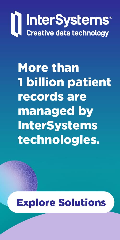Readers Write: The Key to Transitioning from PQRS to Risk-Sharing Agreements
The Key to Transitioning from PQRS to Risk-Sharing Agreements
By Mason Beard

If you, Dr. X, report on quality for your Medicare patients, you’ll get a nice bonus. That’s how PQRS started out—a purely pay-for-reporting initiative.
The bar for this program was set fairly low to encourage providers to meet the requirements. But in its crafty way, the federal government has steadily shifted the program away from the carrot and toward the stick. In fact, the incentive phase of the program ends next year. Providers who don’t measure up will simply experience the stick. In other words, the government has moved its focus from reporting to performance.
I don’t want to paint CMS as conniving to punish poorly performing providers. The truth is that PQRS has been a very successful program and is driving an important focus on the quality of care delivered to Medicare beneficiaries. Another quite evident truth is that CMS is not stopping here.
CMS isn’t just creating government programs and regulations; they’re trying to change provider behavior to rally around outcomes reporting and better care. They’re pushing providers inexorably toward value-based reimbursement (VBR). Reading the tea leaves of what’s happening with PQRS—and considering the proposed Merit-Based Incentive Payment System (MIPS)—the government is going all in on this.
Technology can help providers who are doing PQRS reporting prepare to move successfully into more sophisticated VBR arrangements. From the beginning of PQRS (PQRI at the time), it was evident that providers would need HIT tools to help them track, measure, and report on quality measures. PQRS has been around long enough that there are now a variety of tools providers can use to help them fulfill this requirement.
Not all of these tools can help providers meet PQRS requirements and transition to more sophisticated VBR arrangements using the same infrastructure. Make no mistake — such a transition is essential. To manage it successfully, organizations don’t need a point solution, they need a platform.
Here’s why. The new PQRS, the MIPS of the future and other VBR arrangements don’t focus on reporting outcomes; they focus on improving outcomes. The only way organizations will be able to improve outcomes is by implementing what I call the 4 As:
- Aggregation. Providers need to be able to gather clinical and administrative data from the disparate technologies across their system.
- Analytics. Providers need some level of analytics to understand their population, identify gaps in care, and assess risk.
- Action. Providers can’t just aggregate data and analyze it and then not do anything about it. They need some system in place to engage their patient population (via care management workflows, automated outreach, reminder letters, etc.) and fill gaps in care.
- Accountability. They need to be able to prove the value back to the stakeholder. Simply put, this means reporting the outcomes for a variety of initiatives to CMS and other payers.
It’s important to note that PQRS point systems only address the fourth A: accountability. (Even then, they may not have the flexibility to adapt to the various reporting initiatives that will be required by multiple payers as time goes on). If a PQRS solution only addresses the fourth A, it can’t prepare an organization for risk. It doesn’t create processes that move the organization away from a fee-for-service world.
A platform, on the other hand, enables provider organizations to enter the value-based world. Performing PQRS reporting on a platform is the perfect starting point. As providers fulfill the PQRS reporting requirements, they can layer in processes that help them transition from a reporting workflow to a more proactive workflow focused on population health management. With the aggregated data and intelligence they build up around their performance in the process, they become equipped to enter into VBR arrangements with commercial payers.
A platform delivers an easy, turnkey way to branch out from PQRS to address other, more sophisticated payer initiatives. The time to plan for this transition is now because the stakes are rising. Every plan—both government and commercial—is developing some kind of risk- or performance-based initiative. With a platform, providers don’t have to take the plunge immediately. They can first dip their toes in the waters of PQRS and then move steadily into a world of improved outcomes and value-based reimbursement.
Mason Beard is senior vice president of solutions and co-founder of Wellcentive of Alpharetta, GA.



















































































Cant you sue the F&B company for fraud if they said they paid you money but never did?